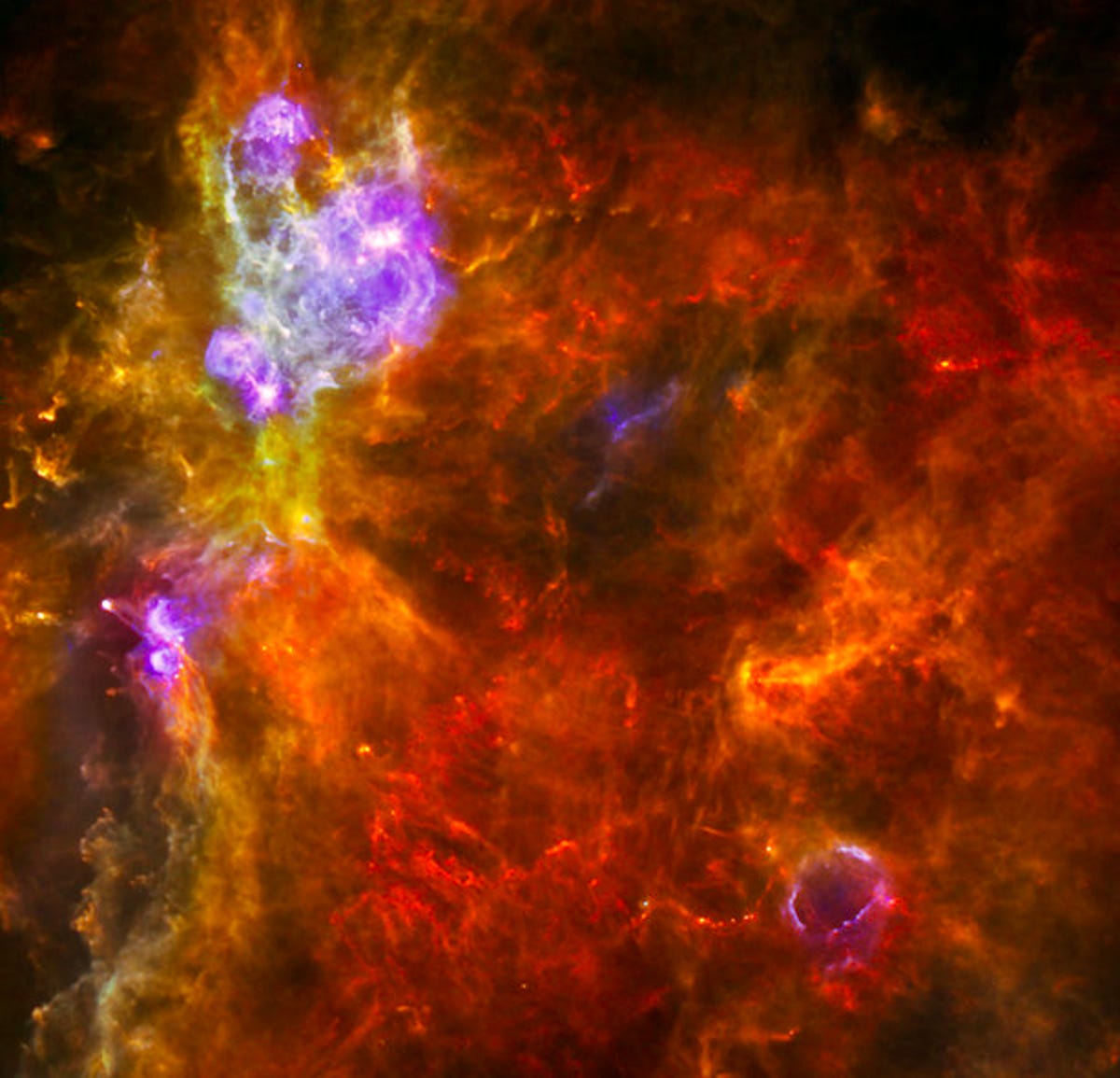A galactic stargazer takes a final look before bowing out (pictures)
The Herschel Space Observatory is about to run out of fuel. But its nearly four-year mission has produced a wealth of new knowledge about our universe.

W3 and a stellar nursery
After nearly four years of taking extraordinary images of the universe, the European Space Agency's Herschel space observatory has only weeks left before it exhausts its supply of liquid helium coolant. When the lights go out, ESA says that Herschel will have performed over 22,000 hours of science observations, 10 percent more than originally planned, according to Leo Metcalfe, the science operations and mission manager for Herschel at ESA's European Space Astronomy Center in Madrid.
To mark the sunset of one of mankind's most successful space endeavors, it's worth taking a look back at some of the more spectacular images it's sent back to Earth.
In this picture, you can see an enormous star-forming cloud, known as W3. W3 is a giant molecular cloud containing a huge stellar nursery, some 6,200 light-years away in the Perseus Arm, one of our Milky Way galaxy’s main spiral arms. The Herschel space observatory focused on W3 for clues about how massive stars are born.
Spanning almost 200 light-years, W3 is one of the largest star-formation complexes in the outer Milky Way, hosting the formation of both low- and high-mass stars. The distinction is drawn at eight times the mass of our own sun: above this limit, stars end their lives as supernovas.
Dense, bright blue knots of hot dust marking massive star formation dominate the upper left of the image in the two youngest regions in the scene: W3 Main and W3 (OH). Intense radiation streaming away from the stellar infants heats up the surrounding dust and gas, making it shine brightly in Herschel’s infrared-sensitive eyes.

